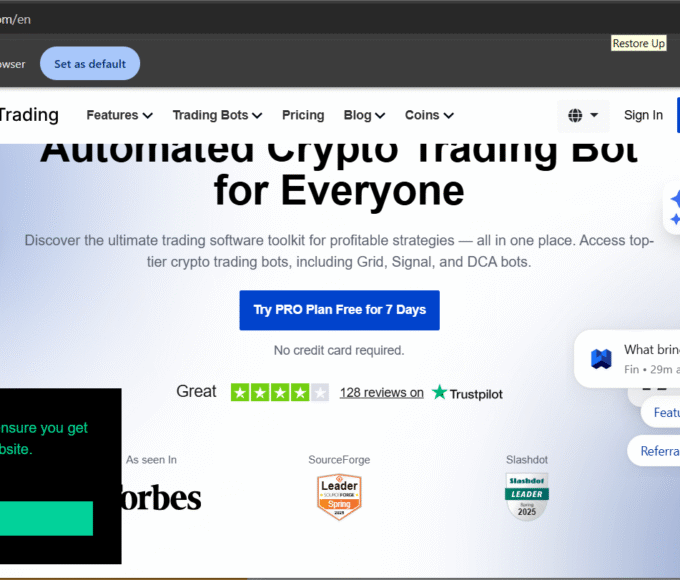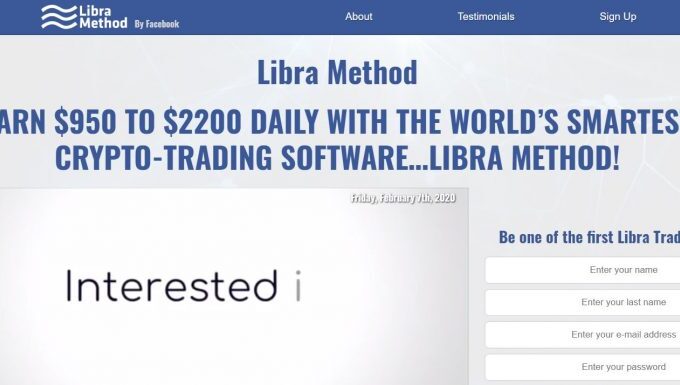The world of online wealth management is built on a foundation of trust. We are asked to hand over our hard-earned capital to institutions that promise not only to safeguard it but also to make it grow. This inherent trust is precisely what scammers seek to exploit. In the shadowy corners of the internet, sophisticated operations are launched with the sole purpose of mimicking legitimacy to steal, not invest.
One such operation that has left a trail of financial devastation is Ashbourne Wealth Management (AshbourneWM.com). This entity presented a façade of British financial propriety and global expertise, but beneath the polished surface lay a meticulously planned and ruthlessly executed scam. This blog post is a comprehensive examination of the AshbourneWM.com deception, detailing its methods, its impact, and the critical lessons every investor must learn.
The Illusion of Prestige: How AshbourneWM.com Built Trust
To understand the success of this scam, one must first appreciate the quality of its packaging. AshbourneWM.com didn’t look like a get-rich-quick scheme; it looked like a serious, conservative wealth management firm.
1. The Power of a Professional Brand
The name “Ashbourne Wealth Management” was a deliberate choice. “Ashbourne” evokes images of British aristocracy and stability, while “Wealth Management” suggests a personalized, high-end service beyond simple trading. Their website, AshbourneWM.com, was a masterclass in deceptive design. It featured a clean, corporate aesthetic, high-quality imagery of city skylines and confident professionals, and a wealth of content explaining their “philosophy” and “methodologies.” The language was not overly aggressive; it was reassuring, focusing on terms like “capital preservation,” “risk-adjusted returns,” and “long-term growth strategies.” This appealed to a more cautious, perhaps older or more risk-averse, demographic.
2. The Fabricated Pedigree: A Web of Lies
A key pillar of their deception was the creation of a fake corporate history and regulatory status.
- False Claims of Regulation: AshbourneWM boldly claimed to be authorized and regulated by top-tier financial authorities. Specifically, they asserted oversight by the Financial Conduct Authority (FCA) in the United Kingdom. The FCA is one of the world’s most respected financial regulators, and its seal of approval is a gold standard for legitimacy. A check on the FCA’s official register, however, would have revealed that “Ashbourne Wealth Management” was never a registered entity. This was the most significant and damning red flag, deliberately hidden in plain sight.
- Fake Addresses: To bolster their UK image, they listed a prestigious London address. A virtual office or simply a false location is a common tactic used by scammers to create a geographical presence without having one. Anyone attempting to visit this address would have found no trace of the company.
- The Illusion of Experience: The website often featured bios of “senior portfolio managers” and “founders” with decades of experience at institutions like Goldman Sachs or J.P. Morgan. These individuals were complete fabrications; their photographs were often stock images or stolen from the profiles of real, unrelated people.
3. The Bait: Tailored, “Exclusive” Investment Solutions
Unlike forex scams that promise insane leverage, AshbourneWM’s approach was more nuanced. They offered a range of “bespoke” portfolios, from “Conservative Income” to “Balanced Growth” and “Aggressive Alpha.” This gave the illusion of a structured, professional assessment of client needs. The promised returns were attractive but not astronomically so—perhaps 8–12% per annum—making them seem plausible to someone unfamiliar with the consistent difficulty of achieving such returns. This veneer of moderation was a crucial part of the trap.
The Anatomy of the Scam: A Step-by-Step Breakdown
The scam followed a well-worn but highly effective psychological playbook, tailored to its target audience.
Phase 1: Initial Engagement and Trust Building
Victims typically found AshbourneWM through targeted advertising on financial news websites, sophisticated-looking sponsored posts on social media, or elaborate phishing emails disguised as market reports from legitimate institutions. Once a potential victim expressed interest, they were assigned a dedicated “account manager.”
This manager was not a brash salesperson but a calm, reassuring voice. They would spend significant time discussing the client’s financial goals, risk tolerance, and timeline. They would send professionally formatted PDF brochures and “white papers” explaining their investment strategy. This lengthy courtship was designed to build immense trust and lower the victim’s defenses.
Phase 2: The Seamless Onboarding Process
The initial investment process was designed to feel legitimate. The victim would be guided to create an account on the AshbourneWM client portal—a sophisticated-looking platform that displayed real-time (but completely fabricated) market data. The process of transferring funds, often via wire transfer to an offshore account, was framed as a standard procedure. The first investment might be a modest sum, say $5,000 or $10,000.
Phase 3: The Illusion of Success and the Upsell
This is where the psychological manipulation intensified. The client portal would immediately show positive returns. The account manager would call to congratulate the client on their “wise decision.” The statements generated were highly detailed and looked authentic. As the (fake) profits grew, the manager would propose a “unique opportunity.” They might claim that a special institutional-grade bond offering had become available or that a private-equity fund was open for a short window. The catch? It required a significantly larger investment—$50,000, $100,000, or more.
The pressure was subtle but powerful. The manager would say, “Given your success so far, my senior director has approved your access to this exclusive fund, but we need to move quickly.” They played on the victim’s greed, validated by the fake profits they could see on their screen, and their fear of missing out (FOMO).
Phase 4: The Withdrawal Trap and the Final Squeeze
The scam reached its climax when a victim—perhaps needing liquidity or simply wanting to realize some of their impressive “gains”—would request a withdrawal. This request triggered the endgame.
- The Initial Stall: The account manager would express surprise but assure the client they would “expedite” the request. A few days later, an email from the “compliance department” would arrive. It would cite an obscure clause in the terms and conditions or claim a routine “anti-money-laundering” audit was required.
- The Demand for Fees: The client would then be informed that, to release the funds, they must first pay a “withdrawal tax,” a “verification fee,” or a “performance bonus.” These fees were substantial, often 10–20% of the total account value. The explanation would be convoluted but sound official. The manager, now more insistent, would pressure the victim to pay quickly to “avoid further delays and penalties.”
- The Disappearance: If the victim paid these fake fees, they would be hit with another demand. If they refused, communication would cease. The client portal would become inaccessible, phone lines would be disconnected, and the “account manager” would vanish. AshbourneWM would effectively cease to exist online, only to potentially reappear months later under a new name and website.
The Devastating Consequences: More Than Just Lost Money
The impact of falling victim to a scam like AshbourneWM is profound and multi-layered.
- Financial Ruin: Victims didn’t just lose their initial investment; they lost the life savings they were persuaded to deposit during the upsell phase. The final insult was often losing more money to the fake “withdrawal fees.” The financial damage can be irreparable, especially for retirees.
- Psychological Trauma: The emotional toll is severe. Victims experience intense feelings of shame, guilt, and humiliation. They often blame themselves for being greedy or for not doing enough research. This can lead to anxiety, depression, and a deep-seated mistrust of all financial institutions.
- Social Strain: The embarrassment can be so overwhelming that victims hide the scam from family and friends, leading to isolation and relationship problems. When the truth comes out, it can cause significant familial strife.
The Unmistakable Red Flags of AshbourneWM and Similar Scams
While the scam was sophisticated, it was not flawless. Several clear warning signs were present from the beginning.
- Unverifiable Regulatory Status: This is the most critical red flag. Always independently verify a firm’s regulatory status on the official regulator’s website. Never trust links provided by the firm itself. A search on the FCA register for “Ashbourne Wealth Management” would have shown no results.
- Unsolicited Contact: Legitimate, top-tier wealth managers do not need to aggressively cold-call or email potential clients. They build their clientele through reputation and referrals.
- Pressure to Invest Large Sums Quickly: Any legitimate financial advisor would caution against rushing large investment decisions. High-pressure tactics, no matter how politely delivered, are a hallmark of fraud.
- Vague Strategies and “Secret” Funds: Be wary of strategies described in glowing but vague terms—“proprietary algorithms,” “insider access”—without transparent disclosure of underlying assets and risks. “Exclusive” opportunities that require immediate action are almost always traps.
- Problems with Withdrawals: The moment a firm places obstacles between you and your own money, or demands upfront fees to process a withdrawal, you are dealing with a scam—full stop.
Protecting Yourself: An Investor’s Due-Diligence Checklist
Before entrusting any entity with your money, complete this checklist:
- Regulatory Check: Confirm the firm’s name, registration number, and address on the official website of the claimed regulator (e.g., FCA, SEC, ASIC).
- Domain-Age Check: Use a domain-age lookup tool. Scam websites are often newly created. AshbourneWM.com was likely only a few months old when it was most active.
- Independent Reviews: Search for the company name followed by terms like “review,” “scam,” or “complaint.” Look for reviews on independent platforms, not just testimonials on the company’s own site. A complete absence of any negative feedback is suspicious.
- Contact Verification: Call the official number listed on the regulator’s site for the firm, not the number provided by your sales contact. Verify their physical address.
- Trust Your Instincts: If an opportunity seems too good to be true, or if you feel even a slight sense of pressure or unease, walk away. There will always be other opportunities.
Conclusion:
The AshbourneWM scam is a stark reminder that, in the digital age, appearances are dangerously easy to fake. Criminal organizations invest significant resources in creating believable lies because the potential payoff is enormous. They understand psychology better than they understand finance.
Protecting yourself requires a shift from passive trust to active verification. The responsibility for due diligence lies with the investor. The story of Ashbourne Wealth Management is a tragic one, but it serves as a crucial lesson: the most important asset you have is not your capital but your skepticism. In the pursuit of wealth, let vigilance be your most trusted advisor.
Report AshbourneWM.com and Recover Your Funds
If you have fallen victim to AshbourneWM.com and lost money, it is crucial to take immediate action. We recommend Report the scam to WEALTH TRACKER LTD, a reputable platform dedicated to assisting victims in recovering their stolen funds. The sooner you act, the greater your chances of reclaiming your money and holding these fraudsters accountable.
Scam brokers like AshbourneWM.com persistently target unsuspecting investors. To safeguard yourself and others from financial fraud, stay informed, avoid unregulated platforms, and report scams to protect. Your vigilance can make a difference in the fight against financial deception. Trustreaders.com, a reputable platform dedicated to assisting victims in recovering their stolen funds. The sooner you act, the greater your chances of reclaiming your money and holding these fraudsters accountable.







Leave a comment